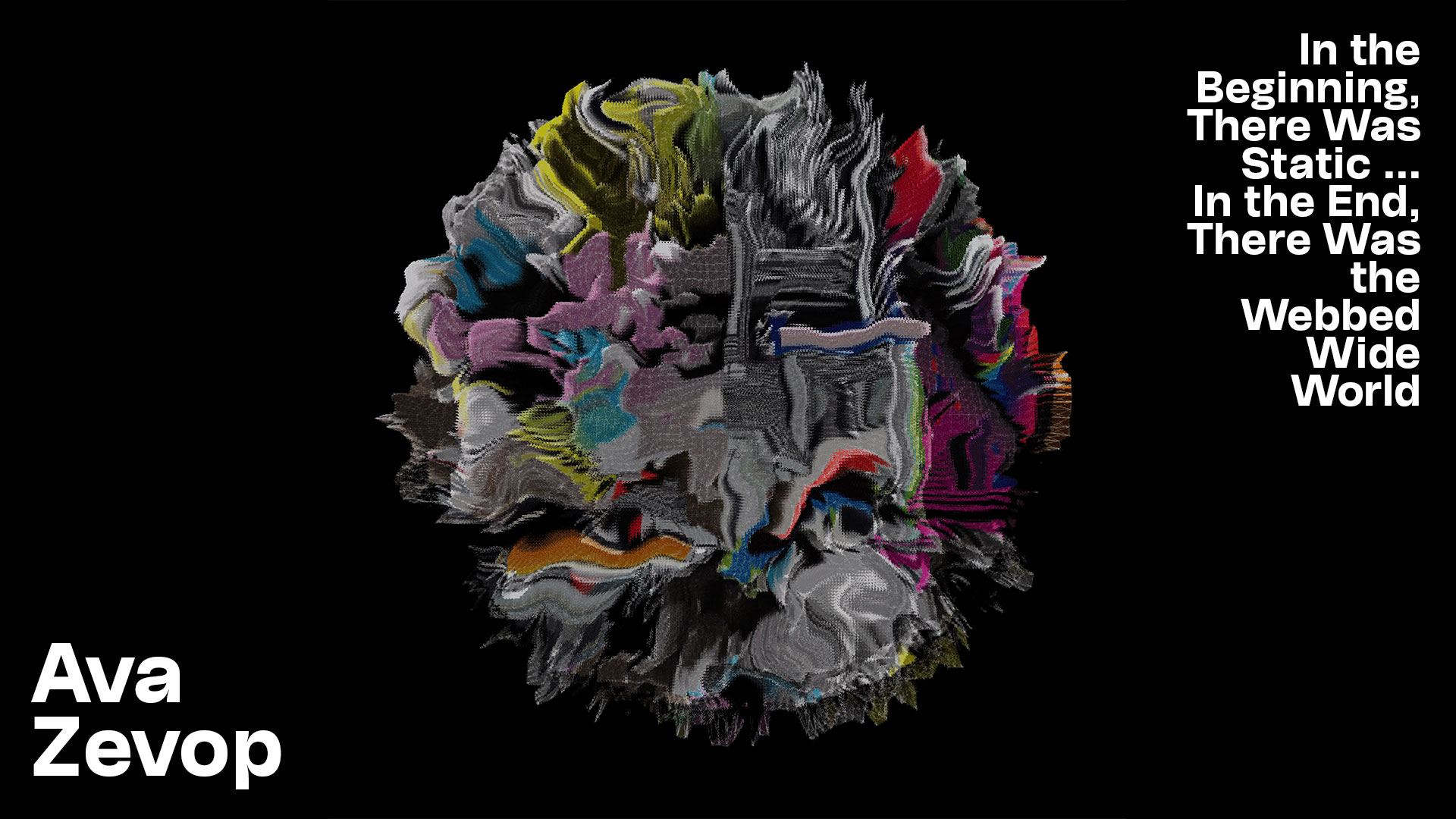Rosemary Lee | Artificial Interpretation
Umetna interpretacija je teoretski esej raziskovalke na področju medijskih študij Rosemary Lee, ki spremlja projekt Na začetku je bila statika ... na koncu spleteni svet umetnice Ave Zevop.
Rosemary Lee | Artificial Interpretation
Relationships between human and machine forms of vision have become central to understanding recent developments in visual media and art. The increasingly ubiquitous use of machine learning in visual applications has had a resounding impact in terms of not only the capacities it affords for the production and interpretation of visual data but also how it shapes conceptions of the visual. While there is growing public awareness of the extent to which algorithms and the large-scale analysis of data shape visual culture, machine learning systems and the processes behind them are often obscure to human understanding. The opacity of these systems may give rise to ambiguous relationships between human visual perception and technical processes that approximate it. The visual interpretation performed by machines presents philosophical uncertainties about the boundaries between the ontological categories of human, machine, visual and processual. Such instances may challenge us to question not only what we see but also the very foundations that condition visual knowledge.
Visual technologies have become thoroughly embedded in the interpretive framework of human vision. Rather than dissolving entirely, the earlier forms of imaging exert their own influence in conditioning the parameters of the visual by reorienting the methods, tools and scales of analysis that are applied to it. Painterly and photographic aesthetics persist even as they are subsumed by data-based processes that are performed by highly automated machines.
When we consider the interpretation of visual phenomena by machines, what stares back is not precisely a machinic point of view but at least to some extent a reflection of our own perceptual framework refracted through the lens of the machine. It’s tempting to either cast the differences between human and machine vision in strictly delineated contrasts or to anthropomorphise the processes at work therein, but it may be more accurate to chart an ambiguous path between these two views. As Berlin-based art historian and curator Andreas Broeckmann explains, the concept of the machine is often used to designate “not a particular class of objects, but a relationship that human subjects have to the world”. (1) Technical methods and apparatus may thereby be seen to inform both the production of visual media and the way we think about what we see.
The fact that visual technologies are capable of variably operating upon, in place of or even decoupled from human vision makes the relationships between humans and machines that arise from such instances quite difficult to reconcile. Art, visual media and the performance of visual processing tasks by machines each engage with the creation of illusions, albeit often to different ends and by different means. As German philosopher and media theorist Friedrich Kittler remarked, “art and media are fundamentally about the deception of sensory organs”.(2) We know, for example, that an image is not what it represents, and it is this deceit that allows it to function as a representation. But in engaging with forms of machinic vision, this deception may be two-fold: on the plane of a common interpretation of the visual, shared to some extent among human perceivers; and a parallel designation of how to interpret the visual on the level of computational processes.
Visual technologies often seek a close alignment with the parameters of human vision in order to function. But as American film and media theorist Shane Denson points out, situations of discorrelation may result in “a phenomenological disconnect between viewing subjects and the object-images they view”.(3) The lack of a direct, real-world referent of generated images goes against ontological categories imposed in many visual applications of machine learning. Images are not the things they represent, yet this lack of being does not inherently stop them from functioning as whatever class of object is designated to them within a technical system. Not only are visual media predicated on deception, but they are also often highly effective at obscuring precisely this. The eye is easily beguiled by optical trickery, but we must also increasingly accommodate layers of parallel processes performed by machines.
Advanced visual technologies such as those employing machine learning explicitly impose a particular model on the phenomena they interpret, as well as on the act of observation. As American writer, artist and scholar Johanna Drucker cautions, we must take care not to conflate the act of observation with observed phenomena. Doing so, she says, “collapses the critical distance between the phenomenal world and its interpretation, undoing the concept of interpretation on which humanistic knowledge production is based”.(4) We run into this risk when we treat all images as interchangeable with data, and it may help to explain some of the issues that arise in the a-critical embrace of technologies without considering what modes of interpretation they impose on the visual.
More than mere tools of vision, automated forms of visual interpretation also offer new ways of looking at and engaging with the world. Images do not merely represent objects and views of the world through simulation. Images act as an interface for thinking through the visual. Engaging machines in this interface introduces aspects of discorrelation between how we see, what we take it to mean and the analogous processes that are increasingly outsourced to automated systems.
Endnotes
1. Broeckmann, Andreas. Machine Art in the Twentieth Century. Cambridge, London: MIT Press, 2016, 17.
2. Kittler, Friedrich. Optical Media. Cambridge, Malden: Polity Press, 2010, 38.
3. Denson, Shane. Discorrelated Images. Durham: Duke University Press, 2020, 26.
4. Drucker, Johanna. Graphesis: Visual Forms of Knowledge Production. Cambridge: Harvard University Press metaLABprojects, 2014, 125.
Rosemary Lee
Rosemary Lee is an artist and media studies researcher. Her work seeks to situate recent artistic practices in relation to the history of visual technologies. Through this lens, Lee explores narratives surrounding shifting relationships between human and machine visual interpretation and expressions of agency.


